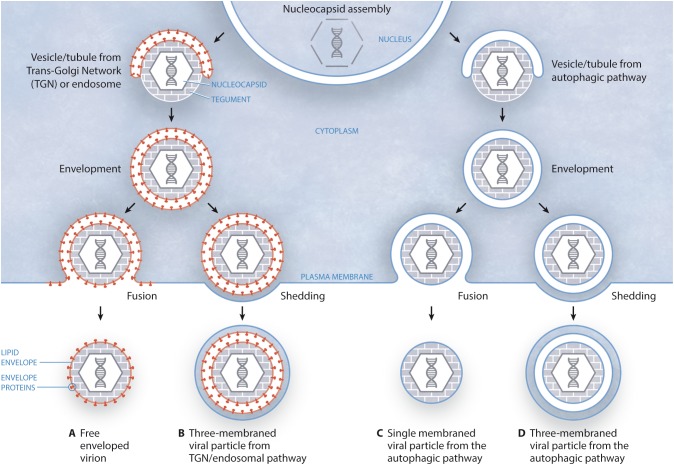FIGURE 1.
Models of biogenesis and secretion of MV-enclosed HSV-1 virions. (A) The canonical egress of HSV-1 entails the fusion of a two-membraned viral particle with the plasma membrane, giving rise to an extracellular free enveloped virion. In this model, the viral envelope is derived from the TGN/endosomes. (B) Alternatively, this structure might exit the cell after shedding of the plasma membrane, resulting in a three-membraned viral particle, which would correspond to an enveloped virion enclosed within a shedding MV. (C) According to this model, vesicles/tubules originating from the autophagic pathway wrap around the nucleocapsid, giving rise to a viral particle surrounded by a double membrane. Then, this structure would reach the plasma membrane and, after fusion, a viral particle surrounded by a single membrane would exit the cell. (D) In an alternative model, the two-membraned viral particle might exit the cell not by fusion, but by shedding of the plasma membrane, giving rise to a three-membraned viral particle.

